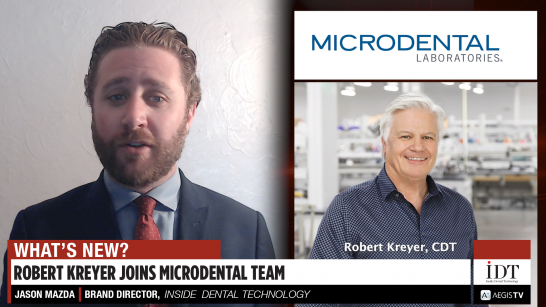Updates on a development in interactive biologic devices and an oral health program for non-dental healthcare professionals, plus an article on multimaterial 3D printing and a video interview with Jed Archibald, CDT, about AR and VR.
Welcome to another remote episode of IDT Weekly. I’m Jason Mazda, and here’s what’s new. Scientists in Illinois used rat muscle and spinal cord tissue on a soft, 3D printed hydrogel skeleton to power tiny walking robots. The researchers say this is the beginning of a direction toward interactive biological devices, including surgical training tools utilizing real biological tissue on a practice dummy. Definitely something to keep an eye on. Elsewhere in dental education, the University of Maryland School of Dentistry is offering a new oral health science program for nurses, physician assistants, and other non-dental healthcare providers. It’s designed to help clinicians recognize and manage oral health infections, diseases, and systemic conditions. The dean of the program says it’s part of a growing recognition of oral health’s importance to systemic health. This month in IDT, our annual Tech Issue includes a feature on the potential for multimaterial printing in dentistry. Chuck Stapleton, a 3D printing expert in his own right, spoke to two leaders in the industry who are developing and testing next-generation technology that could open up all kinds of possibilities, from permanent crowns with color gradients to clear aligners with thermoplastic-type properties. Online this month at insidedentaltech.com, last week we told you about Jed Archibald’s article in our current issue on AR and VR. We also have an exclusive online video interview with Jed about the potential for this technology, both in communication among the dental team and education. Just go to insidedentaltech.com and scroll down to the videos section. Well, that’s it for this week. Join us again next time on IDT Weekly.




